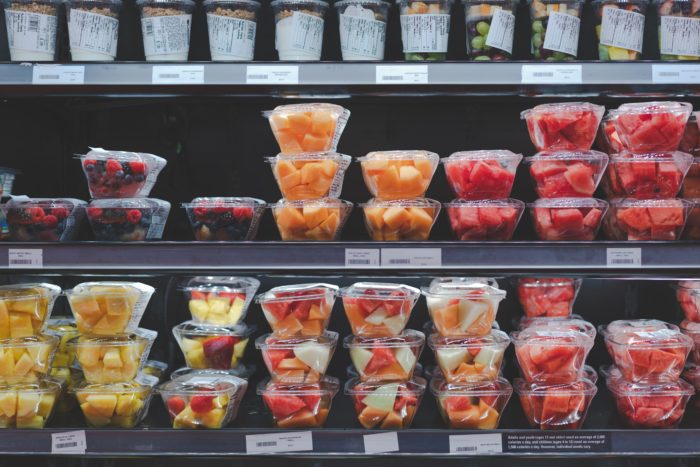Assortment planning in the age of eCommerce is a tricky business. Determining the ideal product mix and inventory width and depth, setting competitive prices, providing personalized experiences, and dealing with rapid lead times is just scratching the surface of what retailers need to do.
That’s why getting your assortment strategy right can be the difference between a successful retail season and one where you end up marking down a large portion of last season’s inventory. In this article, we’ll look at what assortment planning is and how you can do it effectively.
What is Assortment Planning?
In retail, assortment planning is the process of determining the right products and right quantities to meet consumer demand. This includes choosing the products’ sizes, colors, prices, and other characteristics. Beyond the merchandising itself, assortment planning also refers to optimizing a store’s visual merchandising, layout, and the placement of the products.
The assortment planning cycle is ongoing. It can happen quarterly, monthly, or with the seasons, as it does in fashion retailing. A simple example is when fashion retailers place swimwear prominently during the spring and summer, while boots and vests get featured in the fall and winter. The limited window for trend-driven products makes this even more complicated. Once the season is over, what’s left over has to be sold for a discount.
That brings us to the ultimate goal of assortment planning: to drive sales.
It’s all about forecasting demand and meeting it with the best product selection, promotions, branding, and store layouts. You have to understand lead times, product shelf life, reorder points, assortment width and depth, and several other key metrics to ensure that your demand projections are met with the proper assortments.
Planning your assortment has a ripple effect across your end-to-end supply chain. The manufacturer needs to know all of the sizes, colors, patterns, and materials for the product assortment. Marketing teams need to know pricing and audience segmentation across geographies and customer profiles. Stores need to know how to display the products and drive shoppers to the relevant areas.
Assortment planning is the process of determining the right products and right quantities to meet consumer demand.
How to Plan Your Assortment Effectively
Assortment planning requires collecting large amounts of data around your assortments, as well as those of competitors. It’s not just about data collection, though. You need to consider how to use that data to drive sales. Here are some things to keep in mind while planning your assortment.
Use Historical Data to Predict Future Assortment Needs
Assortment planning doesn’t happen in isolation. You should always be doing the next cycle of planning with historical data at your disposal. Looking at past years’ and seasons’ assortments and their performances will help you set realistic targets for the coming season.
Which product categories were winners? Can you identify your most valuable customer segment from last season for an extra promotional push this season? Which products ended up out-of-stock too early on? What were the weak performers in the assortment mix in previous seasons? How can you better localize your next season’s assortment for weaker sales regions?
Tapping into historical data will help you avoid making the same assortment mistakes over and over. No goals or benchmarks should be set without taking a data-driven approach to your assortment plan.

Use Best Seller Intelligence to Find Winning Products
Assortment planning doesn’t only involve in-store operations. Your eCommerce and online marketplace strategies are also deeply impacted by the decisions made when planning your assortment. Any omnichannel retailer should be planning on all fronts.
Best Seller Intelligence can be a powerful data source for understanding your best sellers for product categories over a period of time. Applying this across all of your online marketplaces can give you an edge when you look at what sorts of products across the competitive landscape sell well each season.
A Best Seller Intelligence tool will allow you to see competitive best seller rankings with additional data points like organic rankings and ratings. Understanding which products and brands get “hot” on a weekly or daily cadence gives you the ability to be agile with your assortment planning, ensuring you have inventory where you need it most.
Track Competitor Pricing
A sound pricing strategy is a key part of assortment planning. A major component of setting prices is understanding what competitors are charging for comparable items. You can have the best assortment in the pack, but if your pricing is off, you’ll end up cutting into your margins or ending up with piles of unsold inventory that have to be marked down.
To this end, a price intelligence tool will give you the means to track competitive pricing behavior in real-time and at scale. Poor visibility into the market can leave you reeling if competitors are altering their pricing strategies too quickly. You want to be proactive in setting prices, rather than reactive.

Consider Complementary Items for Cross Merchandising
When making assortment decisions, you’re not just planning how to choose and present a collection of standalone items. It’s also worth thinking about how different items in your assortment complement each other.
This is how you find cross-selling opportunities. For example, if you’re a fashion retailer planning for winter, you would think about how the visual style of all of your winter clothes fit together in a cohesive whole. If a shopper chooses a winter coat, you want to have the right style of boots, hats, and scarves to complete the look. But you also need to make the link between those products explicit.
Promote the items as a whole outfit, or at least as a combination. Applying this thinking across your assortment mix is deeply customer-centric because you’re helping customers find the best combinations of products. Cross-sells are also a proven strategy for increasing basket sizes.
Invest in Strong Visual Merchandising
The visual experience of your stores—both physical and digital—can have a noticeable impact on how well your products sell. That’s why visual merchandising is a critical part of any assortment strategy.
Visual merchandising is all about designing and displaying merchandise in a retail setting with the goal of providing an engaging experience that drives sales. It starts with a deep understanding of your customers and what they’re looking for. Do they want value via low prices? A luxury experience? The cutting-edge trend items?
Once you understand what they want, you can use the visuals and layout of your store or website to present the season’s assortment in a way that naturally draws shoppers to the key items you want to sell. Visual merchandising is an ongoing effort, but with the right alignment between marketing, sales, operations, and design, you can make it a competitive advantage that enhances your assortment.
Assortment planning relies on a lot of data and the ability to interpret that data in a customer-centric, yet sales-forward, way. By making use of tools that collect data in real-time, as well as give you historical sales data, you can make smart assortment decisions that delight customers and improve your bottom line.














